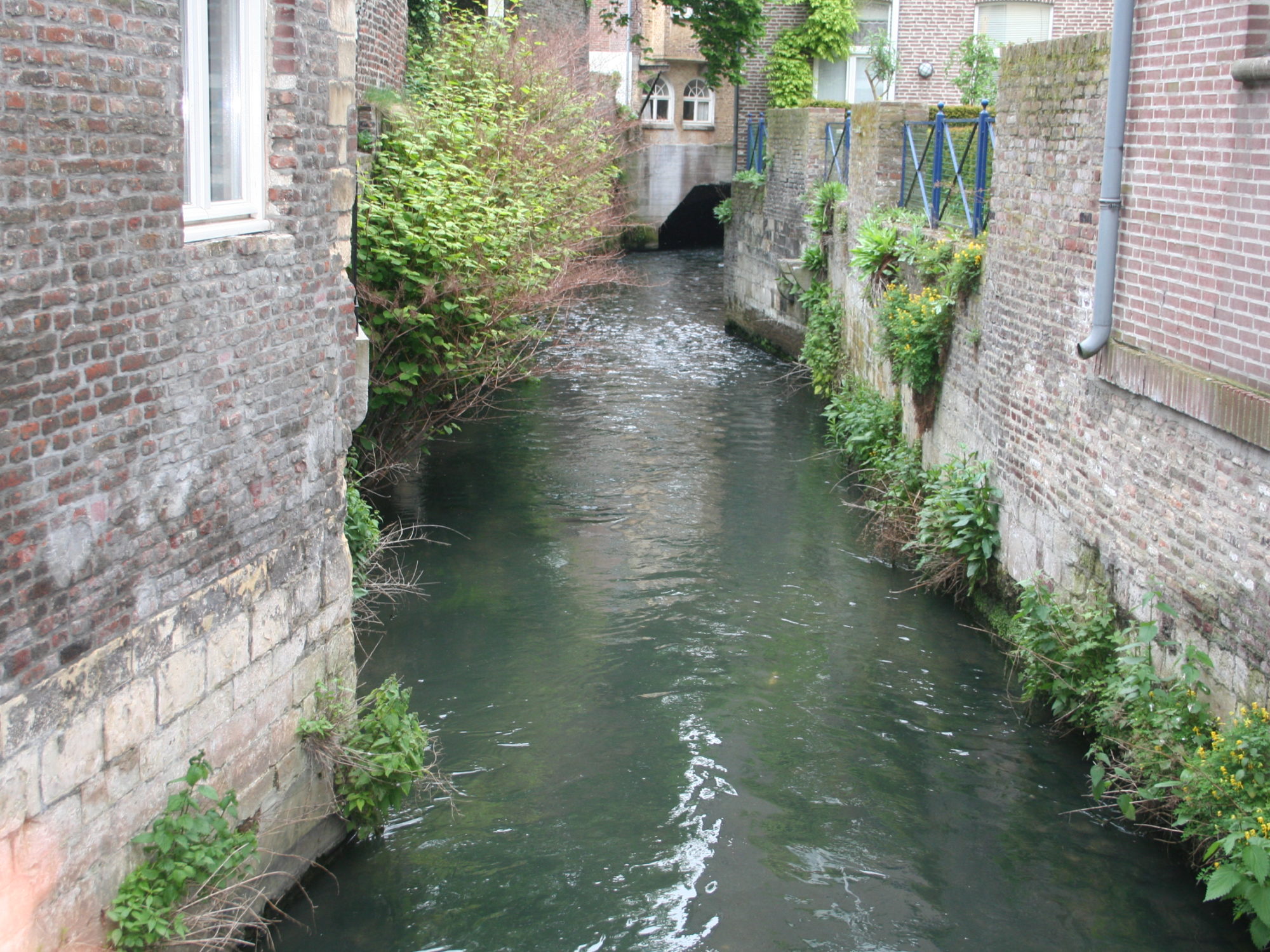URBAN ECOLOGY READING LIST – 2
Beyond some of the specific books focusing on the science of Urban Ecology, there are subsets of literature that support this study. This is the first of three posts to expand the reading list that investigate these other, related disciplinary alignments, including landscape ecology, the hybrid books on planning and design based on ecological systems, and finally, a set of formative literature on environmental planning & design I would consider part of the historical canon.
Landscape Ecology
Closely linked is the science of landscape ecology, which according to the International Association for Landscape Ecology is “…the study of spatial variation in landscapes at a variety of scales. It includes the biophysical and societal causes and consequences of landscape heterogeneity. Above all, it is broadly interdisciplinary.
The conceptual and theoretical core of landscape ecology links natural sciences with related human disciplines. Landscape ecology can be portrayed by several of its core themes, including the spatial pattern or structure of landscapes, ranging from wilderness to cities, the relationship between pattern and process in landscapes, the relationship of human activity to landscape pattern, process and change, [and] the effect of scale and disturbance on the landscape.”
Foundation Papers in Landscape Ecology Moss, Turner, Mladenoff, Weins (eds). Columbia University Press, November 2006.
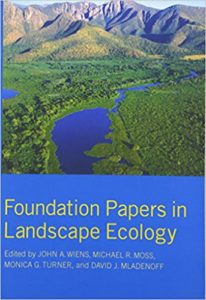
Landscape ecology focuses on spatial heterogeneity, or the idea that where things are and where they are in relation to other things can have important consequences for a wide range of phenomena. Landscape ecology integrates humans with natural ecosystems and brings a spatial perspective to such fields as natural resource management, conservation, and urban planning. The thirty-seven papers included in this volume present the origins and development of landscape ecology and encompass a variety of perspectives, approaches, and geographies. The editors begin with articles that illuminate the discipline’s diverse scientific foundations, such as L. S. Berg’s keystone paper outlining a geoecological analysis based on soil science, physical geography, and geology. Next they include selections exemplifying landscape ecologists’ growing awareness of spatial pattern, the different ways they incorporated scale into their work, the progression of landscape ecology from a qualitative to a quantitative discipline, and how concepts from landscape ecology have come to permeate ecological research and influence land-use policy, conservation practices, landscape architecture, and geography. Together these articles provide a solid introduction to what is now widely recognized as an important area of research and application that encourages new ways of thinking about natural and human-dominated ecosystems
Landscape Ecology, 1st ed. Richard T.T. Forman & Michel Godron. Wiley, February 1986.
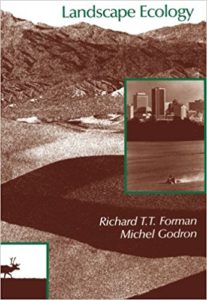 This important new work–the first of its kind–focuses on the distribution patterns of landscape elements or ecosystems; the flows of animals, plants, energy, mineral nutrients and water; and the ecological changes in the landscape over time. Includes over 1,200 references from current ecology, geography, forestry, and wildlife biology literature.
This important new work–the first of its kind–focuses on the distribution patterns of landscape elements or ecosystems; the flows of animals, plants, energy, mineral nutrients and water; and the ecological changes in the landscape over time. Includes over 1,200 references from current ecology, geography, forestry, and wildlife biology literature.
Landscape Ecology in Theory and Practice: Pattern and Process, 2nd ed. Monica G. Turner & Robert H. Gardner, Springer, November 2015 [original publication date 2003]
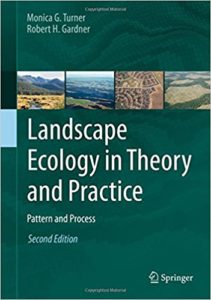 This work provides in-depth analysis of the origins of landscape ecology and its close alignment with the understanding of scale, the causes of landscape pattern, and the interactions of spatial pattern with a variety of ecological processes. The text covers the quantitative approaches that are applied widely in landscape studies, with emphasis on their appropriate use and interpretation.
This work provides in-depth analysis of the origins of landscape ecology and its close alignment with the understanding of scale, the causes of landscape pattern, and the interactions of spatial pattern with a variety of ecological processes. The text covers the quantitative approaches that are applied widely in landscape studies, with emphasis on their appropriate use and interpretation.
The field of landscape ecology has grown rapidly during this period, its concepts and methods have matured, and the published literature has increased exponentially. Landscape research has enhanced understanding of the causes and consequences of spatial heterogeneity and how these vary with scale, and they have influenced the management of natural and human-dominated landscapes. Landscape ecology is now considered mainstream, and the approaches are widely used in many branches of ecology and are applied not only in terrestrial settings but also in aquatic and marine systems. In response to these rapid developments, an updated edition of Landscape Ecology in Theory and Practice provides a synthetic overview of landscape ecology, including its development, the methods and techniques that are employed, the major questions addressed, and the insights that have been gained.”
Landscape Ecology: Theory and Application, 2nd ed. Zev Naveh & Arthur S. Lieberman, Springer, December 1993.
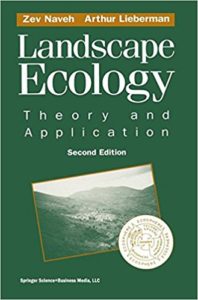 In the preface to the softcover edition of this book in 1989, we stated: Since the publication of the first edition of this book, landscape ecology has made great strides. It has overcome its continental isolation and has also established itself in the English-speaking world. By attracting both problem inquiry and problem-solving-oriented scientists with different cultural, academic, and profes sional backgrounds from all over the world, it has broadened not only its geo graphical but also its conceptual and methodological scopes. We are pleased to confirm in 1993 that the growth of landscape ecology continues, and to again express our gratification at the encouraging re sponse to this first English-language monograph on the subject and its contribution to these developments. As before, we feel special satisfac tion that it has reached not only the shelves of libraries and academic re searchers, but that it has also appealed to professional practitioners, teachers, and their students from industrialized and developing countries, embracing the broad range of fields related to landscape ecology in the natural sciences as well as in the humanities.
In the preface to the softcover edition of this book in 1989, we stated: Since the publication of the first edition of this book, landscape ecology has made great strides. It has overcome its continental isolation and has also established itself in the English-speaking world. By attracting both problem inquiry and problem-solving-oriented scientists with different cultural, academic, and profes sional backgrounds from all over the world, it has broadened not only its geo graphical but also its conceptual and methodological scopes. We are pleased to confirm in 1993 that the growth of landscape ecology continues, and to again express our gratification at the encouraging re sponse to this first English-language monograph on the subject and its contribution to these developments. As before, we feel special satisfac tion that it has reached not only the shelves of libraries and academic re searchers, but that it has also appealed to professional practitioners, teachers, and their students from industrialized and developing countries, embracing the broad range of fields related to landscape ecology in the natural sciences as well as in the humanities.
Land Mosaics: The ecology of landscapes and regions, 1st edition. Richard T.T. Forman. Cambridge Univ. Press, November 1995.
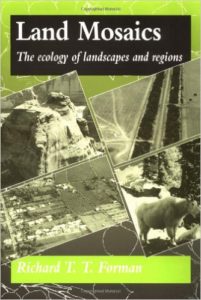 Animals, water, wind, and people flow at different rates according to spatial patterns common to almost all landscapes and regions. This up-to-date synthesis explores the ecology of heterogeneous land areas, where natural processes and human activities interact to produce an ever changing mosaic. The subject has great relevance to contemporary society and this book reflects the breadth of this importance: there are many ideas and applications for planning, conservation, design, management, sustainability and policy. Spatial solutions are provided for society’s land-use objectives. Students and professionals alike will be drawn by the attractive and informative illustrations, the conceptual synthesis, the wide international perspective, and the range of topics and research covered.
Animals, water, wind, and people flow at different rates according to spatial patterns common to almost all landscapes and regions. This up-to-date synthesis explores the ecology of heterogeneous land areas, where natural processes and human activities interact to produce an ever changing mosaic. The subject has great relevance to contemporary society and this book reflects the breadth of this importance: there are many ideas and applications for planning, conservation, design, management, sustainability and policy. Spatial solutions are provided for society’s land-use objectives. Students and professionals alike will be drawn by the attractive and informative illustrations, the conceptual synthesis, the wide international perspective, and the range of topics and research covered.
Learning Landscape Ecology: A Practical Guide to Concepts and Techniques, 2nd ed. Sarah E. Gergel & Monica G. Turner (eds). Springer, April 2017.
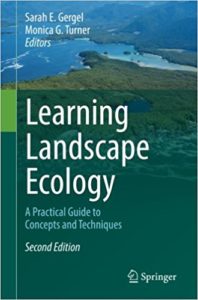 This title meets a great demand for training in spatial analysis tools accessible to a wide audience. Landscape ecology continues to grow as an exciting discipline with much to offer for solving pressing and emerging problems in environmental science. Much of the strength of landscape ecology lies in its ability to address challenges over large areas, over spatial and temporal scales at which decision-making often occurs. As the world tackles issues related to sustainability and global change, the need for this broad perspective has only increased. Furthermore, spatial data and spatial analysis (core methods in landscape ecology) are critical for analyzing land-cover changes world-wide. While spatial dynamics have long been fundamental to terrestrial conservation strategies, land management and reserve design, mapping and spatial themes are increasingly recognized as important for ecosystem management in aquatic, coastal and marine systems.
This title meets a great demand for training in spatial analysis tools accessible to a wide audience. Landscape ecology continues to grow as an exciting discipline with much to offer for solving pressing and emerging problems in environmental science. Much of the strength of landscape ecology lies in its ability to address challenges over large areas, over spatial and temporal scales at which decision-making often occurs. As the world tackles issues related to sustainability and global change, the need for this broad perspective has only increased. Furthermore, spatial data and spatial analysis (core methods in landscape ecology) are critical for analyzing land-cover changes world-wide. While spatial dynamics have long been fundamental to terrestrial conservation strategies, land management and reserve design, mapping and spatial themes are increasingly recognized as important for ecosystem management in aquatic, coastal and marine systems.
This second edition is purposefully more applied and international in its examples, approaches, perspectives and contributors. It includes new advances in quantifying landscape structure and connectivity (such as graph theory), as well as labs that incorporate the latest scientific understanding of ecosystem services, resilience, social-ecological landscapes, and even seascapes. Of course, as before, the exercises emphasize easy-to-use, widely available software.
Urban Landscape Ecology: Science, policy and practice (Routledge Studies in Urban Ecology) Robert A. Francis, James D.A. Millington, Michael A. Chadwick (editors), Routledge, April 2016
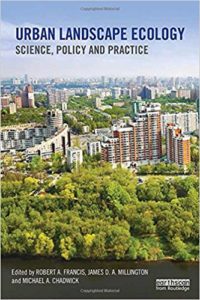 The growth of cities poses ever-increasing challenges for the natural environment on which they impact and depend, not only within their boundaries but also in surrounding peri-urban areas. Landscape ecology – the study of interactions across space and time between the structure and function of physical, biological and cultural components of landscapes – has a pivotal role to play in identifying sustainable solutions. This book brings together examples of research at the cutting edge of urban landscape ecology across multiple contexts that investigate the state, maintenance and restoration of healthy and functional natural environments across urban and peri-urban landscapes. An explicit focus is on urban landscapes in contrast to other books which have considered urban ecosystems and ecology without specific focus on spatial connections. It integrates research and perspectives from across academia, public and private practitioners of urban conservation, planning and design. It provides a much needed summary of current thinking on how urban landscapes can provide the foundation of sustained economic growth, prospering communities and personal well-being.
The growth of cities poses ever-increasing challenges for the natural environment on which they impact and depend, not only within their boundaries but also in surrounding peri-urban areas. Landscape ecology – the study of interactions across space and time between the structure and function of physical, biological and cultural components of landscapes – has a pivotal role to play in identifying sustainable solutions. This book brings together examples of research at the cutting edge of urban landscape ecology across multiple contexts that investigate the state, maintenance and restoration of healthy and functional natural environments across urban and peri-urban landscapes. An explicit focus is on urban landscapes in contrast to other books which have considered urban ecosystems and ecology without specific focus on spatial connections. It integrates research and perspectives from across academia, public and private practitioners of urban conservation, planning and design. It provides a much needed summary of current thinking on how urban landscapes can provide the foundation of sustained economic growth, prospering communities and personal well-being.
HEADER: Image via UW City/Nature: Urban Environmental Humanities
